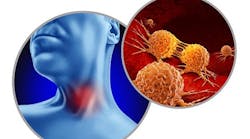Editor’s note: Part three of a series.
If you’ve been following this series, by now you’re probably wondering how you could possibly add one more thing to your schedule. Instead, you should be asking, why not add one thing that makes your workflow more effective? Think about what your life would be like if your recommendations were seriously considered, case acceptance from your operatory improved, and your day was spent treating patients with quality care. If the one additional assessment in your schedule has the potential to increase patient engagement and case acceptance, and build value for the recommended treatment, the question becomes, why not?
Read the articles in this series ...
Using technology as a basis for high-quality dental hygiene care
Evidence-based decision-making just went digital
Technology’s worth is exponential, and integrating it to your daily workflow adds additional science to dental hygiene and provides compelling evidence for dental hygiene therapies. A day without technology is a day in the dark ages. If you’re new to tech, it may be difficult to envision your workflow with technology. Here are a few quick tips to successfully integrate technology into your daily workflow.
Plan your day starting at the morning huddle
When reviewing your daily schedule of patients in the morning huddle, it may be beneficial not only to outline who is due for an exam or radiographs but also discuss who needs additional assessments. For instance, if your patient is due for periodontal charting or radiographs, share with your team that you will be using advanced assessment tools and may need support if you use more than your allotted time for the appointment. Also identify how this technology may benefit the patient. If you are planning to scan the patient, it may be helpful to discuss what you’ll be looking for and potential interventions that will be shared with the patient. Discussing this during the morning huddle prepares everyone for the day and provides the clinician a platform to plan for high-quality dental services that include the use of technology.
Know your technology
Having a good idea of which technology best fits your patients’ needs can aid in a seamless transition of integration. When you know which technology you’re using, you can focus on technical competence and refine your techniques to increase efficiency.
Be prepared
Once you have identified the best technology for the appointment, be sure to update any software beforehand and stock your armamentarium as appropriate (e.g., scanning sleeves, perio probe, intraoral camera cover). Be sure to bookmark your cloud-based software on your internet browser for easy access. It may be helpful to have usernames and passwords preset, so your patient education and interpretation can be accessed in one click.
Be confident in explaining your findings
Once you have collected the data and are ready to share your findings, you can be confident in explaining your assessments to the patient. Patient-friendly terminology and authority as a provider can aid in case acceptance. Leverage your knowledge and specialized training by using technology as an adjunctive tool to assist in a digital diagnosis. Being well versed in effective communication strategies can move the patient closer to saying yes to treatment or modifying their home-care routines/behaviors.
Consider communication strategies
When educating patients, present the discussion in a way that’s easy for them to digest and understand. Most patients can relate to cause and effect when they are presented with the scenario. Framing the assessments around what you found is integral to having a productive discussion. Ask open-ended questions like, what did you hear? What do you see? How do you think this affects your oral health? These are great leads to a more in-depth discussion. After the patient offers insight to what they believe the assessments may mean, the clinician can then outline any potential concerns that could lead to tooth structure or soft tissue destruction.
Another great open-ended question to ask the patient once the consequences are reviewed is, what do you think will happen if we do nothing? This allows the patient to connect cause and effect, and they may beat you to the punch and ask what their options are to stop the destruction or prevent further deterioration.
Explain the difference between a proactive and reactive approach to dentistry. While there is no wrong approach, having a reactive approach can result in further deterioration and pain, and more costly dental procedures. As prevention specialists our roles are to educate the patient on how to be more proactive.
Using technology may be challenging at first. However, when you employ a systematic approach, the process can become more fluid and the technology easier to integrate. One approach is to prep the patient on what you’re doing and why it’s important. Once you’ve educated them and completed the technological assessment, present the potential problems to the patient in the present tense. This approach will make communication less challenging, the treatment plan more compelling for the patient, and the diagnostic pathway clearer.
Editor's note: This article appeared in the April 2023 print edition of RDH magazine. Dental hygienists in North America are eligible for a complimentary print subscription. Sign up here.
References
- Balaban CM, Gibree SA, Athar A, et al. AI-driven growth of DSOs. Compend Contin Educ Dent. 2021;42(3):e5-e9.
- Open wide: how AI is reshaping the future of dentistry. Pearl. https://cdn2.hubspot.net/hubfs/5664760/OpenWide_Pearl_Book_Final_2.pdf
- Fan J, Caton JG. Occlusal trauma and excessive occlusal forces: narrative review, case definitions, and diagnostic considerations. J Periodontol. 2018;89(Suppl 1):S214-S222. doi:10.1002/JPER.16-0581
- Roberts C. Read this before your next trip to the dentist. Consumer Reports. August 4, 2022, Updated August 9, 2022. https://www.consumerreports.org/dental-oral-care/read-this-before-your-next-trip-to-the-dentist-a5054427914/






